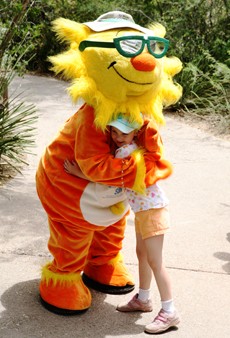If all you want to do this summer is lay out in the sun, you might want to think twice.
Melanoma, “”the most serious type of cancer of the skin,”” is the second-most-common form of cancer for young adults 15-29 years old, according to the National Cancer Institute.
The Arizona Cancer Center’s Skin Cancer Institute hosted a “”Living in Harmony with the Sun”” event May 2 and 3 at the Arizona-Sonora Desert Museum. In correspondence with Melanoma/Skin Cancer Detection and Prevention Month, the event aimed to educate people about skin cancer and ways to prevent it.
The main goal was to “”get the information out,”” said Denise Spartonos, chair of the event and coordinator of community outreach programs at the Skin Cancer Institute. “”Skin cancer … is one of those cancers, that if it’s found early, it’s very treatable and it’s a cancer that’s very preventable.””
In an effort to bypass lying in the sun for hours, many college-age people choose other means of darkening their skin. Members of the cancer center tried to outline what is good and what isn’t when it comes to fake tanning.
“”Well, I don’t think there’s anything wrong with sunless tanners, as long as they’ve been approved by the FDA and that any kind of risk associated with them is transparent,”” said Naja McKenzie, a postdoc and founder of Living in Harmony with the Sun.
“”That’s what I tell my young ladies: If you want to have a little color for the prom, go get sprayed,”” McKenzie said. “”It’s a lot safer than going to the UV booth.””
Spartonos said while it may seem less damaging to use indoor tanning methods, it is just as dangerous as laying in the hot sun.
“”There’s been a lot of myths out there that indoor tanning is safe, but it’s not. It’s just as damaging and can cause a lot of serious health consequences,”” she said.
Another major contributing factor to skin cancer levels is that for the most part, young people ignore it until it becomes an issue for them, McKenzie said.
“”People aren’t really, especially in their teens or 20s, are not very concerned about skin cancer risk unless they’ve already had it or know someone who’s had it,”” she said. “”They’re not concerned with risk 30 years, 40 years from now. But they are concerned about their appearance.””
In addition to an exhibit with information from various organizations, the event offered free full-body skin cancer screenings.
McKenzie is currently doing research on the “”transmission of health attitudes through social networks, through friend networks,”” she said. “”I’m looking at it down the road as a potential for teaching new behaviors through peer leaders … We attribute negative behavior to peer influence, so why not positive behavior?””
No matter their motivations to protect their skin, volunteers encouraged visitors to avoid UV rays and examine their skin regularly for any suspicious bumps, spots or moles.
“”It’s really what you do now,”” Spartonos said. “”Sun damage is cumulative over your lifetime.””









